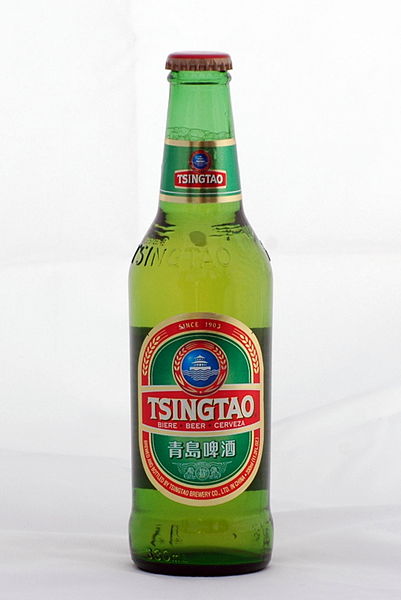Germans and their beer – Part 1
- 23. April 2017 - Anniversary, Emigration, General, Germany, Hamburg, Knowledge
The favorite beverage of the Germans? Beer! At least that’s the cliché. There of course is reason to that. One is certainly the “Reinheitsgebot” (German beer purity law) that supports the good reputation of German beer. It was passed on 23 April 1516, therefore every year at that day, German Beer Day is celebrated. The beer purity law is the oldest food law in the world. It states that German beer can only be made of water, hops and barley. The role of yeast that influences fermentation wasn’t understood at the time. Today adding yeast allows a constant quality of the beer. Prior to the German beer purity law, many things were mixed into the beer to for example add a special flavor, heighten the intoxicating effect or to make beer drinkable again that had turned sour. The first verifiable predecessors to this law can be found in 1156 in Augsburg.
The history of beer is closely linked to the history of bread. It originates from around the time in which humans settled and started to grow crops. First verifiable beer production is known from the Sumerians. A systematical brewing technology evolved in the monasteries of Central Europe in the 7th century A.D. The brewing process and its procedures were studied, questioned and improved. According to the brewery itself, Weihenstephan is the oldest commercial brewery of the world. This is debatable though. What can be said is that it is one of the oldest still existing breweries.
In times of poor water quality, beer was healthier than water, because it was germ-free to a large extend. It was a good food supplement as well. The consumed quantities were accordingly. Children drank beer as well at the time (the alcoholic content was significantly lower than today).
Today, Southern Germany is especially well known for the German art of brewing. But in the High Middle Ages Northern German beer was dominant in quantity as well as quality. With increasing quality and longer storage life, exports increased as well. The Hanseatic League played an important role. Hamburg called itself brew house of the Hanse. In 1379 there were 457 breweries in the Hanseatic city of Hamburg. The decline of the Hanse and the rise of new fashionable beverages (coffee, tea, chocolate) led to a drop in the beer demand in Northern Germany. At the same time the German beer purity law helped to make the Southern German beer competitive.
Beer in Germany today
In 2016, 95 million hectoliters of beer were brewed in Germany. This means Germany is the fourth biggest brewing nation worldwide (after China, USA and Brazil). It can be characterized through its variety. There are over 1,400 breweries with about 6,000 different beer brands. In 2016, Bavaria had in comparison to the other federal states not only the most breweries (624) but also brewed the most beer (23 million hectoliters). But it was the greater area of Hamburg and Schleswig-Holstein that had with 8 new breweries the biggest increase in comparison to the year before.
One reason for the growing amount of breweries is the Craft-Beer-Scene. In contrast to the situation in the USA, where few large corporations divided the market under each other since prohibition, in Germany small and medium-sized breweries were always an important part of the market. Craft-Beer-Producers in Germany don’t want to create everyday beers, but to differ from the taste of the masses. Craft brewing and high quality ingredients are obviously very important. Old brewing traditions are revived and regionality as well as independency matter. So-called “Microbreweries” with an annual output of up to 1,000 hectoliters make up more than half of the breweries.
The beer consumption is still decreasing in Germany since 1980. Back then the per capita consumption was nearly 146 liters; in 2015 it was just short of 106 liters. With 144 liters, Czechs drank a lot more beer in comparison.
German brewers all over the world
Not only is German beer exported, many well-known breweries were founded by emigrated Germans. In the following we will only name two interesting examples. In this blog we will soon write about US-brewers of German origin as well.
The Chinese Tsingtao Brewery Company is very well-known. The coastal region Kiautschou was under colonial rule between 1897 and 1914. Under the pretext of the murder of two German missionaries a lease was forced. In 1903, the Germania-Brewery was founded in the port Quingdao (in German Tsingtau) by German and British settlers. In 1904, the first beer was on the market. At first it was brewed in accordance with the German beer purity law. While the colony itself had to be subsidized for a long time by Germany, the brewery was very successful. No wonder it was pursued after Japan took over in administration in the course of World War I – but it was now called Tsingtao. Later the Chinese administration didn’t close the brewery as well. In 2016, the company was with an annual output of 76 million hectoliters the second biggest Chinese brewing corporation and the sixth-largest worldwide.
In 1920, the Namibia Breweries Limited was founded in Windhoek, Namibia by the German bankers Carl List from Berlin and Hermann Ohlthaver from East Frisia. Four small breweries that had been founded in the years 1902 to 1917 by German immigrants were integrated into the South West Brewery. The name refers to the old name of Namibia: South West Africa that was a German colony from 1884 to 1915. In 1990 the brewery received its present name when the country became independent. Today it is one of the leading beverage producers in Namibia and brews beer according to the German beer purity law. In addition every brewer undergoes training in Germany.
Other "beery" exports
The beer garden has its origin in Munich. As there had to be low temperatures for the brewing of bottom-fermented beer, it could only be produced during the cold months of the year. To be able to enjoy this beer in summer as well, deep cellar caves were … into the river hillsides of the Isar to have a cool place for storage. To gain additional shade, chestnut trees were planted on top. In summer the fresh beer was served above the cellars. This was very popular and soon there were protests by innkeepers in the city. King Ludwig I. ordered that it was allowed to serve beer above the cellars, but no food apart from some bread. This meant that hungry guests were redirected into the city center. Until today there is often the option to bring your own snack even if there is food served as well. Today every place that serves beer open-air is usually called a beer garden. The concept and name can since be found in many countries.
The Oktoberfest Munich is known all over the world. The first Oktoberfest was in the form of a horse race in honor of the bridal couple of Ludwig of Bavaria and princess Therese von Sachsen-Hildburghausen on 17 October 1810 on Theresenwiese (named after the bride). Today the Oktoberfest is with 6 million visitors the biggest fair in the world. Since its beginnings it more and more became a beer festival. There are thousands of imitations all over the world:
- The by far biggest audience (2-3 million a year) is attracted by the Qingdao International Beer Festival in China.
- In Canada, Kitchener-Waterloo-Oktoberfest takes place since 1969 and attracts about 800,000 visitors a year. Kitchener was called Berlin until 1916 and many Germans settled there. Until today the German language is cultivated in the city.
- The Oktoberfest Blumenau in Brazil first took place in 1984. It has over 700,000 visitors every year. It was founded by German immigrants in 1850 on the initiative of chemist and pharmacist Hermann Blumenau from the Harz Mountains. Conflicts with the original inhabitants and a flood in 1855 made the setting difficult. The idea to host an Oktoberfest was formed when in 1983 the Rio Itajaí caused a lot of damage again. The fair financed the reconstruction. By the way, the beer for the fair is provided by the Eisenbahn-brewery, of course it is of German origin and brews according to the German beer purity law.
- The biggest Oktoberfest within the USA is the Oktoberfest Zinzinnati. It first took place in 1976 in Cincinnati and attracts more than 500,000 visitors. In memory of the German heritage of the city the name refers to the German pronunciation of its name.
- There is an Oktoberfest Namibia in Windhoek as well, with over 5,000 visitors.



0 comments